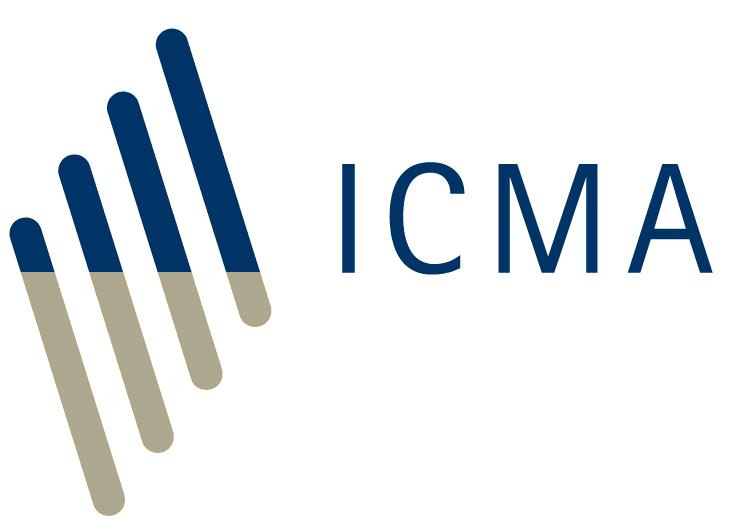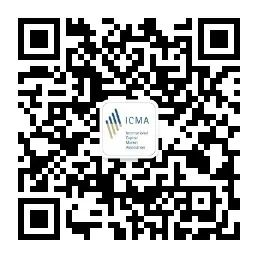The Fundamental Review of the Trading Book (FRTB) is a comprehensive suite of capital rules developed by the Basel Committee on Banking Supervision (BCBS) as part of Basel III, intended to be applied to banks’ wholesale trading activities. Finalised in January 2016 as the Minimum Capital Requirements for Market Risk, it aims to address a number of identified shortcomings in the existing Basel II.5 framework. Originally, the revised framework was scheduled to be implemented as final rules under domestic legislation on 1 January 2019, with regulatory reporting under the framework becoming a requirement from 31 December 2019. However, on 7 December 2017, the Basel’s Committee oversight body, Group of Central Bank Governors and Heads of Supervision (GHOS), announced a delay in its implementation until 2022. In the EU, FRTB is being implemented as part of the Revised Capital Requirements Regulation (CRR II), published in November 2016, and the 2021 proposed Banking Package (including CRR III and CRD VI).
While FRTB was not intended to increase banks’ capital costs beyond those imposed by Basel II.5, it is clear from both BCBS and industry analysis that banks will see significant increases in their cost of capital, in particular to support their trading activities. Given the potential impacts for secondary bond market efficiency and liquidity, the final calibration and implementation of FRTB are key priorities of ICMA’s Secondary Market Practices Committee (SMPC).
27 October 2021
European Commission adopts and publishes a review of EU Banking rules (the Capital Requirements Regulation and Capital Requirements Directive).
The package concludes the implementation of Basel III, including FRTB, in the European Union, while taking into account the specific features of the EU's banking sector. Specifically, the proposal aims to ensure that internal models used by banks to calculate their capital requirements do not underestimate risks, thereby ensuring that the capital required to cover those risks is sufficient. In turn, this will make it easier to compare risk-based capital ratios across banks, intended to restore confidence in those ratios and the soundness of the sector overall. Most of the proposals are scheduled to apply as from 1 January 2025. The transition period for the output floor will run from 1 January 2025 (starting with a 50% calibration) to 1 January 2030 (when the full 72.5% calibration will apply). The Commission expects the proposals in the Banking Package to lead to a weighted average increase in institutions’ minimum capital requirements of 6.4% to 8.4% by 2030, and an increase of between 0.7% and 2.7% by 2025.
Basel Committee publishes work programme and strategic priorities for 2021/22
The 2021/22 work programme and strategic priorities include:
- Monitoring the full, timely and consistent implementation of the Basel III framework by all members, as part of the Committee's Regulatory Consistency Assessment Programme
- Completing an evidence-based evaluation of the effectiveness of the Basel III standards, covering both the “lessons learned” from the Covid-19 pandemic and empirical experience over the past decade.
The Basel Committee's oversight body, the Group of Central Bank Governors and Heads of Supervision (GHOS), has endorsed a set of measures to provide additional operational capacity for banks and supervisors to respond to the immediate financial stability priorities resulting from the impact of the coronavirus disease (COVID-19) on the global banking system.
Summary of revised implementation timeline:

27 March 2020
EBA publishes final draft standards on key areas for the EU implementation of the FRTB
The European Banking Authority (EBA) publishes final draft Regulatory Technical Standards (RTS) on the new Internal Model Approach (IMA) under the Fundamental Review of the Trading Book (FRTB). These technical standards conclude the first phase of the EBA roadmap towards the implementation of the market and counterparty credit risk frameworks in the EU.
These final draft technical standards cover 11 mandates and have been grouped in three different documents: the final RTS on liquidity horizons for the IMA; the final draft RTS on back-testing and profit and loss attribution (PLA) requirements; and the final draft RTS on criteria for assessing the modellability of risk factors under the IMA.
- Final draft RTS on liquidity horizons for the IM
- Final draft RTS on back-testing and PLA requirement
- Final draft RTS on criteria for assessing the modellability of risk factors under the IMA
February 2020
The ECB Banking Supervision has published the results of a questionnaire surveying banks on the impact of the new FRTB rules on their use of internal models. The ECB has drawn several conclusions from the banks’ responses, which reflect their thinking as at mid-2019:
- Approximately 40% of the banks currently using the internal models approach intend to seek IMA approval under the new rules. Roughly half of these banks aim to include as many trading desks as possible under the IMA, while the other half plan to include only a subset of their trading desks. Approximately 40% of respondents intend to move from the IMA to the new standardised approach. The remaining 20% are currently undecided.
- Some banking groups have indicated that they may apply for IMA approval under the new rules at the consolidated, sub-consolidated or solo level only, while others will do so for several consolidation levels. Most approvals could be handled within the Single Supervisory Mechanism, while some would require coordination with outside supervisors.
- The number and importance of trading desks covered by the internal models approach vary significantly across banks.
EBA publishes final draft standards on key aspects related to the implementation of the standardised approach for counterparty credit risk
The final draft RTS set out the method for identifying the material risk drivers of derivative transactions on the basis of which the mapping to one or more of the risk categories is to be done. In addition, these RTS set out the formula that institutions are to use to calculate the supervisory delta of options, when mapped to the interest rate risk category, which is compatible with negative interest rates. Finally, the final draft RTS introduce a method suitable for determining the direction of the position in a material risk driver.
May 2019
EBA launches consultation on technical standards on the standardised approach for counterparty credit risk.
On 2 May 2019, the European Banking Authority (EBA) launched a consultation on four draft Regulatory Technical Standards (RTS) on the Standardised Approach for Counterparty Credit Risk (SA-CCR). These draft technical standards specify key aspects of the SA-CCR and represent an important contribution to its smooth harmonised implementation in the EU. The draft technical standards were developed based on the mandates included in the latest available version of proposed amended Capital Requirements Regulation (CRR2). The consultation runs until 2 August 2019.
Consultation paper on draft RTS on the standardised approach for counterparty credit risk
Draft technical standards on the standardised approach for counterparty credit risk
January 2019
At its meeting in Basel on Monday 14 January 2019, the Basel Committee's oversight body, the Group of Central Bank Governors and Heads of Supervision (GHOS), endorsed a set of revisions to the market risk framework intended to enhance its design and calibration by:
- introducing a simplified standardised approach for banks with small or non-complex trading portfolios;
- clarifying the scope of exposures that are subject to market risk capital requirements;
- enhancing the risk sensitivity of the standardised approach by revising the treatment of foreign exchange risk, index instruments and options;
- revising the standardised approach risk weights applicable to general interest rate risk, foreign exchange risk and selected credit spread risk exposures;
- revamping the assessment process to determine whether a bank's internal risk management models appropriately reflect the risks of individual trading desks (the so-called profit and loss attribution test); and
- revising the requirements for identifying risk factors that are eligible for internal modelling and the capital requirement applicable to risk factors that are deemed non-modellable.
The revised market risk framework will take effect as of 1 January 2022, concurrent with the implementation of the Basel III reforms endorsed by the GHOS in December 2017. A description of the background, objectives and overall impact of the market risk framework is set out in an accompanying explanatory note.
September 2018
ECB publishes the three risk-type-specific chapters of its guide to internal models for consultation. These chapters, on credit risk, market risk and counterparty credit risk, are intended to ensure a common and consistent approach to the most relevant aspects of the applicable regulations on internal models for banks directly supervised by the ECB. The consultation ends on 7 November 2018.
March 2018
The Basel Committee on Banking Supervision (BCBS) has published a Consultative Document on proposed revisions to the minimum capital requirements for market risk (also known as the “Fundamental Review of the Trading Book”). This proposal largely aim to address industry concerns and recommendations arising from the 2016 framework, Minimum capital requirements for market risk.
Among the various proposed revisions being consulted on are:
- A more sensitive floor for the ‘low correlation’ scenario to reflect more realistically market conditions in the standardized sensitivity based approach (SBA)
- A number of modifications to the (internal model approach) P&L attribution test, including:
- Better data alignment between the ‘hypothetical P&L’ and ‘risk-theoretical P&L’
- Quarterly rather than monthly test frequency
- An observation period of 12 months (rather than 1 month)
- A ‘traffic light’ approach to the penalty capital function
- A number of modifications to the IMA process for non-modellable risk factors (NMRFs), including:
- Acknowledgment of the usefulness of data pooling
- Allowing banks to use their own quotes
- A revision of what constitutes a trading desk
- A proposal for a (more conservative) simplified SA (for smaller banks)
Briefing notes and resources
January 2019
BCBS: Minimum capital requirements for market risk
September 2018
ECB guide to internal models: Risk-type-specific chapters
June 2018
Industry response to BCBS consultation on revisions to the minimum capital requirements for market risk
March 2018
BCBS Consultative Document: Revisions to the minimum capital requirements for market risk (March 2018)
February 2018
Fundamental Review of The Trading Book - The road to IMA, a presentation by Eduardo Epperlein of Nomura for the ICMA Secondary Market Practices Committee
January 2018
An ICMA briefing note on implementation challenges of FRTB for secondary bond markets
December 2017
Basel Committee announces delay to FRTB implementation until 2022 (Dec 2017)
BCBS: Basel III Monitoring Report (Dec 2017)
EBA Discussion Paper: Implementation in the European Union of the revised market risk and counterparty credit risk frameworks (Dec 2017)
May 2017
IHS Markit/Oliver Wyman, FRTB Markit Modelability Model: preliminary results (May 2017)
January 2017
BCBS: Frequently asked questions on market risk capital requirements (Jan 2017)
November 2016
European Commission: Proposed regulation amending the Capital Requirements Regulation (CRR II) (Nov 2016)
January 2016
BCBS: Minimum capital requirements for market risk (Jan 2016)
November 2015
ISDA/GFMA/IIF: FRTB QIS Analysis (Nov 2015)
An ICMA briefing note on the Fundamental Review of the Trading Book







